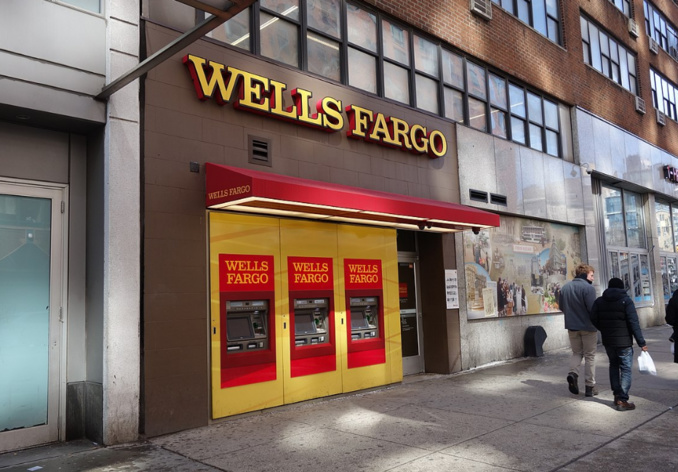The largest American banks were among the first to open the corporate reporting season for the second quarter, and attracted special attention. A slowdown in economic activity and an increase in unemployment, as a rule, lead to an increase in non-payment of loans, which, in turn, can result in large losses for banks. In 2007-2008, large-scale losses incurred by American financial corporations due to the growth of non-payments on mortgage loans resulted in a financial crisis in the United States and then around the world.
The three leading US banks - JP Morgan, Citigroup and Wells Fargo - which reported at once on Tuesday, announced allocation of a total of $ 28 billion to cover future loan losses. JP Morgan's profit fell by half, and Wells Fargo reported the first quarterly loss since the Great Depression. Two days later, this trend was supported by another American bank from the “big six” - Bank of America, which reported a 52% drop in net profit. Back in the first quarter, the company was preparing for a wave of credit defaults, estimating possible losses on loans at $ 4.76 billion. By the end of the second quarter, the bank raised its forecast for credit losses to $ 5.12 billion.
Now the main question for investors is whether the second quarter figures will turn out to be the lowest point for banks, Barclays analyst Jason Goldberg told CNBC.
However, other American banks showed extremely strong performance. For example, Morgan Stanley Bank has exceeded all analysts' forecasts. Its revenue from trading in financial instruments with fixed income (bonds, etc.) jumped 170%, revenue from trading in stocks increased by 23%, and the income of the investment banking division as a whole grew by 39%. As a result, the Dow Jones index added almost 600 points, or 2.1%, by the end of Tuesday, showing the best dynamics over the past two weeks, while the S&P 500 index added 1.3%. Some newspapers have already called this reaction from investors and the stock market a roller coaster.
Goldman Sachs generally showed one of its best quarters in terms of revenue from trading operations - its growth amounted to 93%; income from trading in bonds soared 150%, and from trading in stocks - by 46%. In general, investment banking operations of Goldman Sachs showed a 36% increase in revenue.
The scatter in the performance in one industry is explained by the fact that in the second quarter retail banking and lending operations were hit by an increase in non-payment of loans, while trading in securities, on the contrary, became extremely profitable due to record turnovers of transactions. According to Refinitiv, the volume of debt offerings rose 52% from the first, reaching $ 3.3 trillion. This became an absolute record.
The need to raise funds under quarantine conditions forced the companies to resort to placing their shares. Equity capital market activity in the first half of this year was at its highest in the past five years. The volume of funds raised worldwide amounted to $ 447 billion, which is 41% more than a year earlier.
source: bloomberg.com, wsj.com
The three leading US banks - JP Morgan, Citigroup and Wells Fargo - which reported at once on Tuesday, announced allocation of a total of $ 28 billion to cover future loan losses. JP Morgan's profit fell by half, and Wells Fargo reported the first quarterly loss since the Great Depression. Two days later, this trend was supported by another American bank from the “big six” - Bank of America, which reported a 52% drop in net profit. Back in the first quarter, the company was preparing for a wave of credit defaults, estimating possible losses on loans at $ 4.76 billion. By the end of the second quarter, the bank raised its forecast for credit losses to $ 5.12 billion.
Now the main question for investors is whether the second quarter figures will turn out to be the lowest point for banks, Barclays analyst Jason Goldberg told CNBC.
However, other American banks showed extremely strong performance. For example, Morgan Stanley Bank has exceeded all analysts' forecasts. Its revenue from trading in financial instruments with fixed income (bonds, etc.) jumped 170%, revenue from trading in stocks increased by 23%, and the income of the investment banking division as a whole grew by 39%. As a result, the Dow Jones index added almost 600 points, or 2.1%, by the end of Tuesday, showing the best dynamics over the past two weeks, while the S&P 500 index added 1.3%. Some newspapers have already called this reaction from investors and the stock market a roller coaster.
Goldman Sachs generally showed one of its best quarters in terms of revenue from trading operations - its growth amounted to 93%; income from trading in bonds soared 150%, and from trading in stocks - by 46%. In general, investment banking operations of Goldman Sachs showed a 36% increase in revenue.
The scatter in the performance in one industry is explained by the fact that in the second quarter retail banking and lending operations were hit by an increase in non-payment of loans, while trading in securities, on the contrary, became extremely profitable due to record turnovers of transactions. According to Refinitiv, the volume of debt offerings rose 52% from the first, reaching $ 3.3 trillion. This became an absolute record.
The need to raise funds under quarantine conditions forced the companies to resort to placing their shares. Equity capital market activity in the first half of this year was at its highest in the past five years. The volume of funds raised worldwide amounted to $ 447 billion, which is 41% more than a year earlier.
source: bloomberg.com, wsj.com



















